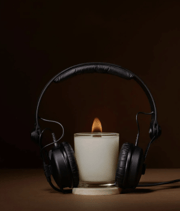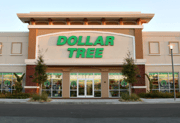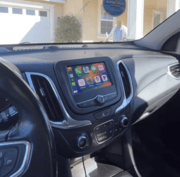13 dangerous cleaning combos to avoid (and what to do instead)
By
Veronica E.
- Replies 0
There’s something satisfying about a freshly cleaned home—whether it’s gleaming countertops, spotless floors, or that unmistakable “just cleaned” scent.
But mixing the wrong cleaning products can turn your tidying routine into a dangerous experiment.
Some combos do more harm than good, neutralizing each other or even releasing toxic fumes.
And while it may seem logical to double up for extra cleaning power, chemistry doesn’t always work that way.
At The GrayVine, we know our readers are smart and safety-conscious.
But even seasoned homekeepers may not realize that popular cleaning hacks from social media—or habits passed down over the years—could pose serious risks.
Certain combinations can cause respiratory irritation, chemical burns, and even explosive reactions in rare cases.
It’s important to understand which products never go together.
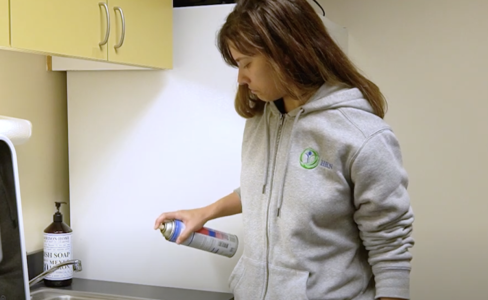
Here are 13 product pairings you should never mix—and the safer cleaning habits that should replace them.
1. Baking soda and vinegar: A fizzy reaction with no real benefit
You’ve probably seen videos showing baking soda and vinegar bubbling together to unclog drains or clean grout.
But the fizz is just a chemical reaction between an acid and a base—leaving behind mostly water and salt.
While each ingredient can be useful on its own, they cancel each other out when combined. For real results, use them separately.
2. Ammonia and bleach: Creates toxic chloramine vapors
This is one of the most dangerous combos.
Mixing bleach and ammonia releases chloramine gas, which can cause coughing, chest pain, and even respiratory damage.
Many glass and all-purpose cleaners contain ammonia, so double-check before using bleach nearby.
3. Vinegar and bleach: A recipe for chlorine gas
Mixing these two can create chlorine gas, which is highly irritating to the eyes, throat, and lungs—and has sent many people to the ER.
Both products are powerful disinfectants, but never use them at the same time.
Also read: “Swedish Death Cleaning” may be the most meaningful way to declutter your life
4. Different drain cleaners: Risk of violent chemical reaction
Using multiple drain cleaners to tackle a clog might seem like a strong approach, but it can cause explosions or release harmful fumes.
Only use one product at a time and follow the label’s instructions carefully.
5. Hydrogen peroxide and vinegar: Forms peracetic acid
While both ingredients are common in DIY cleaning, combining them creates peracetic acid, a corrosive compound that can irritate your skin, eyes, and lungs.
Apply one product, rinse thoroughly, and let the area dry before applying the other.
6. Vinegar and Castile soap: Curds and cleanup trouble
Castile soap is plant-based and mild, but when mixed with vinegar, it turns into a gooey, oily mess.
This combo breaks the soap down into fatty acids that don’t clean well—and leave residue behind.
Also read: Transform your bathroom like a pro with these insider deep cleaning shower secrets
7. Lysol and bleach: Respiratory irritant risk
Lysol sprays often contain quaternary ammonium compounds, which react with bleach to release toxic gases.
The combination can irritate your respiratory tract, eyes, and skin. Stick to one disinfectant at a time.
8. Rubbing alcohol and bleach: Can produce chloroform
Bleach and isopropyl alcohol form chloroform and hydrochloric acid—both highly toxic.
Chloroform can cause dizziness and unconsciousness. Avoid using them together on the same surface.
9. Oven cleaner and bleach: High risk of chemical burns
Oven cleaners already contain strong caustic agents.
Adding bleach can trigger reactions that release dangerous fumes and increase the risk of chemical burns.
Always ventilate well and stick to one product.
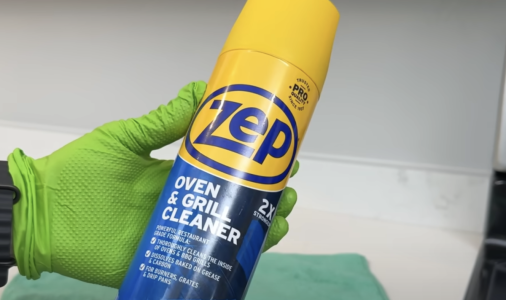
Also read: The 1-minute trick that made cleaning easier—will it work for you too?
10. Vinegar and water on wood floors: Strips protective finish
Though vinegar is often used in DIY floor cleaners, it’s too acidic for hardwood.
It can dull and damage the finish, leaving your floors vulnerable to water damage.
Use cleaners specifically designed for wood instead.
11. Dish soap and bleach: Can release toxic gases
Mixing dish soap with bleach isn’t safe, especially if the soap contains ammonia or similar compounds.
This pairing can create chloramine gases. If switching products, rinse thoroughly between uses.
12. Pesticides and water: Sometimes weakens or worsens effects
Diluting pesticides with water without checking the label may reduce their effectiveness or create dangerous gases.
Always read and follow directions exactly. Never improvise.
13. Glass cleaner and bleach: Another chloramine hazard
Many glass cleaners contain ammonia, which turns toxic when mixed with bleach.
For sparkling windows, stick with just a glass cleaner—no extra disinfectants needed.
Also read: He turned cleaning into a joyful ritual—here’s how you can too!
Why chemistry matters when cleaning
It’s tempting to think that two cleaners are better than one—but many household products are chemically reactive.
Mixing acids with bases, oxidizers with solvents, or bleach with just about anything else can lead to harmful results.
Understanding how products interact can protect your health and prevent property damage.
Also read: The $1.25 kitchen cleaning miracle you'll NEVER want to miss at Dollar Tree
Safe cleaning tips to remember
Keeping your home clean shouldn’t come at the expense of your health.
By sticking to one product at a time and avoiding these dangerous combos, you can protect yourself, your family, and your home.
The sparkle is still satisfying—and much safer.
Read next:

Have you ever accidentally mixed the wrong cleaning products or learned a helpful cleaning safety tip? Share your experience in the comments—we’d love to hear what’s worked (and what to avoid)!
But mixing the wrong cleaning products can turn your tidying routine into a dangerous experiment.
Some combos do more harm than good, neutralizing each other or even releasing toxic fumes.
And while it may seem logical to double up for extra cleaning power, chemistry doesn’t always work that way.
At The GrayVine, we know our readers are smart and safety-conscious.
But even seasoned homekeepers may not realize that popular cleaning hacks from social media—or habits passed down over the years—could pose serious risks.
Certain combinations can cause respiratory irritation, chemical burns, and even explosive reactions in rare cases.
It’s important to understand which products never go together.

Always read product labels and avoid mixing cleaners—some combinations can be harmful to your health and home. Image Source: YouTube / Home Rehab Network.
Here are 13 product pairings you should never mix—and the safer cleaning habits that should replace them.
1. Baking soda and vinegar: A fizzy reaction with no real benefit
You’ve probably seen videos showing baking soda and vinegar bubbling together to unclog drains or clean grout.
But the fizz is just a chemical reaction between an acid and a base—leaving behind mostly water and salt.
While each ingredient can be useful on its own, they cancel each other out when combined. For real results, use them separately.
2. Ammonia and bleach: Creates toxic chloramine vapors
This is one of the most dangerous combos.
Mixing bleach and ammonia releases chloramine gas, which can cause coughing, chest pain, and even respiratory damage.
Many glass and all-purpose cleaners contain ammonia, so double-check before using bleach nearby.
3. Vinegar and bleach: A recipe for chlorine gas
Mixing these two can create chlorine gas, which is highly irritating to the eyes, throat, and lungs—and has sent many people to the ER.
Both products are powerful disinfectants, but never use them at the same time.
Also read: “Swedish Death Cleaning” may be the most meaningful way to declutter your life
4. Different drain cleaners: Risk of violent chemical reaction
Using multiple drain cleaners to tackle a clog might seem like a strong approach, but it can cause explosions or release harmful fumes.
Only use one product at a time and follow the label’s instructions carefully.
5. Hydrogen peroxide and vinegar: Forms peracetic acid
While both ingredients are common in DIY cleaning, combining them creates peracetic acid, a corrosive compound that can irritate your skin, eyes, and lungs.
Apply one product, rinse thoroughly, and let the area dry before applying the other.
6. Vinegar and Castile soap: Curds and cleanup trouble
Castile soap is plant-based and mild, but when mixed with vinegar, it turns into a gooey, oily mess.
This combo breaks the soap down into fatty acids that don’t clean well—and leave residue behind.
Also read: Transform your bathroom like a pro with these insider deep cleaning shower secrets
7. Lysol and bleach: Respiratory irritant risk
Lysol sprays often contain quaternary ammonium compounds, which react with bleach to release toxic gases.
The combination can irritate your respiratory tract, eyes, and skin. Stick to one disinfectant at a time.
8. Rubbing alcohol and bleach: Can produce chloroform
Bleach and isopropyl alcohol form chloroform and hydrochloric acid—both highly toxic.
Chloroform can cause dizziness and unconsciousness. Avoid using them together on the same surface.
9. Oven cleaner and bleach: High risk of chemical burns
Oven cleaners already contain strong caustic agents.
Adding bleach can trigger reactions that release dangerous fumes and increase the risk of chemical burns.
Always ventilate well and stick to one product.

Oven cleaners are powerful on their own—never mix them with bleach or other products to avoid toxic fumes. Image Source: YouTube / Clean That Up.
Also read: The 1-minute trick that made cleaning easier—will it work for you too?
10. Vinegar and water on wood floors: Strips protective finish
Though vinegar is often used in DIY floor cleaners, it’s too acidic for hardwood.
It can dull and damage the finish, leaving your floors vulnerable to water damage.
Use cleaners specifically designed for wood instead.
11. Dish soap and bleach: Can release toxic gases
Mixing dish soap with bleach isn’t safe, especially if the soap contains ammonia or similar compounds.
This pairing can create chloramine gases. If switching products, rinse thoroughly between uses.
12. Pesticides and water: Sometimes weakens or worsens effects
Diluting pesticides with water without checking the label may reduce their effectiveness or create dangerous gases.
Always read and follow directions exactly. Never improvise.
13. Glass cleaner and bleach: Another chloramine hazard
Many glass cleaners contain ammonia, which turns toxic when mixed with bleach.
For sparkling windows, stick with just a glass cleaner—no extra disinfectants needed.
Also read: He turned cleaning into a joyful ritual—here’s how you can too!
Why chemistry matters when cleaning
It’s tempting to think that two cleaners are better than one—but many household products are chemically reactive.
Mixing acids with bases, oxidizers with solvents, or bleach with just about anything else can lead to harmful results.
Understanding how products interact can protect your health and prevent property damage.
Also read: The $1.25 kitchen cleaning miracle you'll NEVER want to miss at Dollar Tree
Safe cleaning tips to remember
- Read the label. Don’t mix products unless directed—and watch for ingredients like ammonia or bleach.
- Ventilate. Open windows or turn on a fan when using strong cleaners.
- Use gloves. Protect your skin from harsh or reactive substances.
- Stick to one product. Rinse surfaces thoroughly before switching cleaners.
Keeping your home clean shouldn’t come at the expense of your health.
By sticking to one product at a time and avoiding these dangerous combos, you can protect yourself, your family, and your home.
The sparkle is still satisfying—and much safer.
Read next:
- Transform your home with these 4 simple cleaning habits—start today!
- Secret cleaning blunder exposed by woman—but critics point out a crucial detail!
- This secret dryer detail could be sabotaging your laundry game and safety—find out what cleaning pros know!
Key Takeaways
- Mixing common household cleaning products like vinegar and bleach, or ammonia and bleach, can release toxic gases that are dangerous to your health.
- Using multiple different drain cleaners together can cause harmful chemical reactions, leading to toxic fumes or the risk of chemical burns.
- Combining acidic (like vinegar) and basic cleaners (like baking soda or Castile soap) usually neutralizes their cleaning power and can make cleaning harder, not easier.
- Cleaning wooden floors with vinegar and water can strip away their protective finish, leaving them vulnerable to damage and discoloration.
Have you ever accidentally mixed the wrong cleaning products or learned a helpful cleaning safety tip? Share your experience in the comments—we’d love to hear what’s worked (and what to avoid)!



